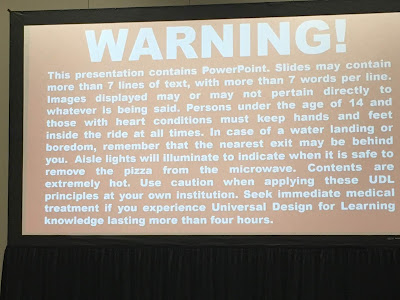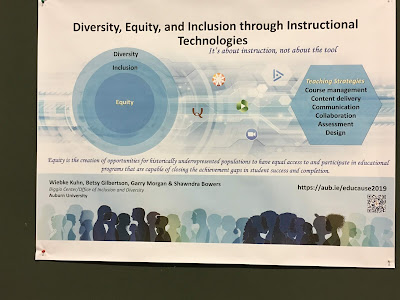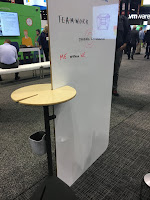Educause 2020 is over, so here are some of my takeaways both from the conference and about the virtual experience.
1. The experience
The Community Day worked quite well for me as it gave a space to connect with a particular group of folks for a long enough time to get deeper discussions going. I was surprised to see how few people took advantage of this opportunity to connect with their colleagues.
Similarly, the one Brain Date I participated in also worked quite well; however, I had purposefully signed up for a group date which did not happen. The conversation was lovely, and I am glad I did this, but I fear that quite a few of the folks who put themselves out there as conversation dates may have been disappointed.
Having some of the session as pre-recorded presentations worked well; indeed, I am not sure why so many of the other sessions were not such a recording as there were no real attempts to connect with the audience.
Finally, the exhibit hall provided a lot of content and also opportunities to connect. Making appointments was easy, and just getting content was also nice; it was somewhat surreal to have business meetings with folks from their living rooms.
And of course one of the big draw backs of having this virtual conference was that I really could not bring myself to ignore my work and meetings, finding myself a few times running two sessions at the same time or participating in a meeting while running a session in parallel - a lot of multitasking that, as we know, does not really do the trick.
2. The content
Some of the ideas and questions that I found intriguing:
Biophilia: adding images of nature to our academic spaces may be helpful for our well-being. Consider adding nature images to digital signage.
Learning space design: how is COVID-19 having an impact on our strategic planning when it comes to learning spaces?
Now that everyone has taught online, can we assume that for space renovations of especially larger spaces, we can just ask faculty to teach online rather than scramble to find a surge space and work with a stressed time line?
A Gartner report discussed Top Strategic Predictions for 2020 and Beyond: Contemplating the Human Condition, with some prognoses what may be happening in the next few years. Of interest to me was Daryl Plummer's discussion about:
- By 2023, 30% of IT organizations will have rethought their BYOD policies towards BYOE (E=Enhancement) to account for medical implants of various types.
- This continuing shift in medical technology will allow more folks with disabilities (by 2023, triple) to join the work force, making it necessary for a closer look at accommodations and for universal design principles in the work force- something we should model in higher ed.
- By 2024, the WHO will identify online shopping as an addictive disorder. What kind of impact does this have on supporting our colleagues, our students in terms of wellness but also financial literacy?
- This disorder will not be helped by AI technology that targets consumers more effectively through emotional tailored advertising and by behavior tracking. What does this mean for our ethical data management policies?
- By 2023, up to 30% of world news and video content will be authenticated as real by blockchain technology - how would higher education use this technology to protect its brand?
Post-Pandemic Digital Literacy focused on different types of literacy that will be needed for the kinds of occupations the future will bring. More importantly, we need to have a keener understanding around digital content and the ways it can be manipulated. For example, spotting machine-generated content will become very difficult. A tool like Narrative Science will help tell the story of certain data. Video editing will allow for content to be radically changed, like in this Back to the Future video.
So, learning about digital literacy has to be pervasive, inclusive, activist and collective.
The Top IT issues were divided up under three categories
- Restore - go back to pre-COVID states
- Evolve - shift a little
- Transform - change radically
I am hoping that Transform will be a key concept for all of us, with a transformation to even more student-centered redefinition of an institution.
Changing for the Better from a Black Person's Viewpoint challenged us to think pervasively about inclusion, diversity and equity. One key aspect is the job market - we need to make a more concerted effort to get our job ads out to relevant groups, listservs, job sites so that we reach different groups with talent. The idea that there is no talent is wrong, we are just not announcing in the right places. How do we make our job searches safer, especially at the final stage of bringing candidates to campus? This should include a clear sense of whom they will meet, how the travel is going to be arranged. How are we making sure that our student workers learn these kinds of job search skills and that they feel supported by us?
I participated in other sessions, so could write more, but these were my key takeaways.












